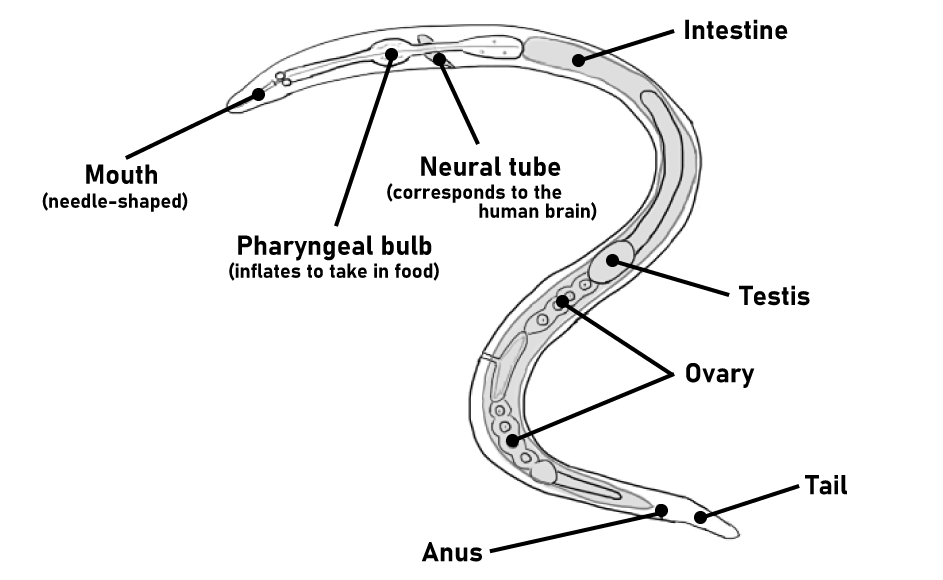


What Are Nematodes?
"Nematodes" is a general term for organisms belonging to the phylum Nematoda. The body length is usually between 0.5 mm and 4 mm, but some species can grow to several meters. Currently, more than 10,000 species have been identified, but it is estimated that there are about 500,000 species on the earth, and some estimates say that there are more than 100 million species
Also, they have a large population. There are records of 90,000 nematodes in one rotten apple and 1,000 nematodes of 36 species in 6-7 ml of soil. As such, they are familiar to us in our daily lives.

Their bodies are filamentous or tubular, not divided into segments, and have no tentacles or appendages. They have the organs necessary for animals to feed, digest, sense, move and reproduce. Their bodies are covered with cuticles and some have spines and bristly hairs.

They are usually dioecious and sexually reproducing. However, some are hermaphroditic, or become female-only for a period of time in the developmental cycle, and reproduce by parthenogenesis to change generations. The larvae molt four times to become adults and grow between molts.
C. elegans, a type of nematode, was proposed as a model experimental animal in experimental biology by the biologist Brenner in the 1960s, and the whole process of cell differentiation from the fertilized egg to the adult worm with about 1000 cells has now been elucidated.
Habitats
Nematodes can be found in many places on Earth, including the deep sea, mountains, and polar regions.
Most nematodes live in the oceans, freshwater, and soil, and feed on putrefactive organic materials, bacteria, mold, and other plants and animals. Some nematodes live as parasites on animals and plants.
Animal-parasitic nematodes live in various parts of invertebrates and vertebrates such as insects, and some of them can cause diseases in humans and livestock. Anisakis, a parasite of fish and shellfish that causes food poisoning, is also a type of nematode. Some plant-parasitic nematodes have adverse effects on crops and trees, while others are used as natural enemies of harmful insects.
Classification
Nematodes are thought to have originated from marine ancestors and then spread to freshwater and land, inhabiting various places on the earth. They have expanded their habitat through generations, evolving to adapt to oceans, freshwater, and land over and over again. Some species of nematodes that live on land today have marine and freshwater ancestors, while some species of nematodes that live in waters today have terrestrial ancestors.
This site is participating in the 23nd Japan Junior high school/high school Web contest(第23回全国中学高校Webコンテスト).
